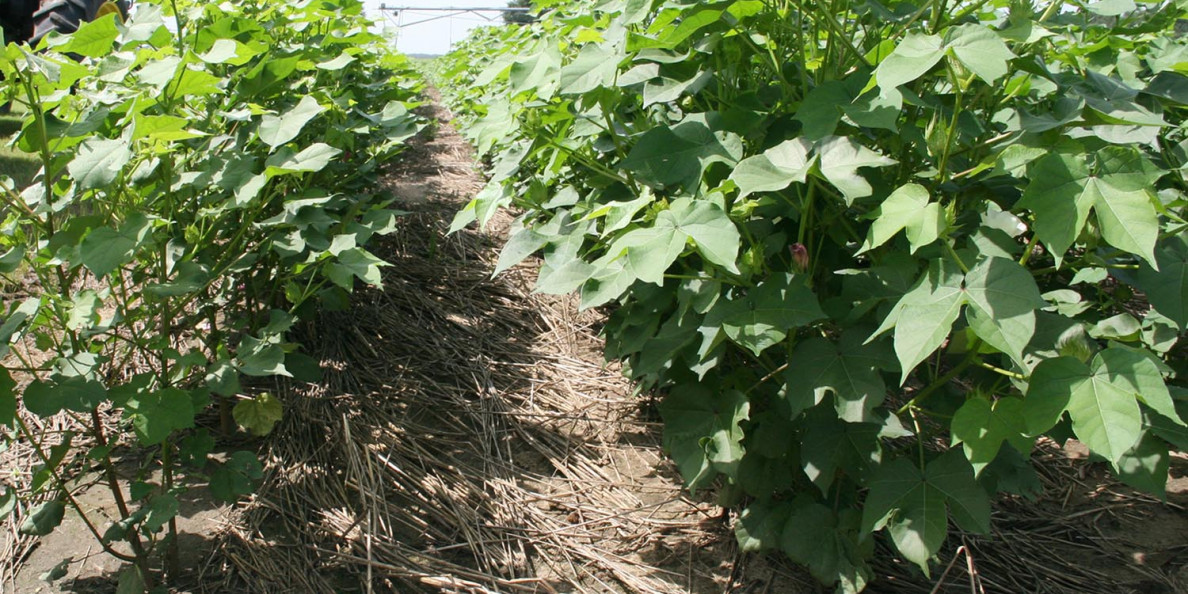University cotton weed scientists suggest several options for starting clean and keeping fields weed-free, including tillage, burndown, pre-emergence and postemergence sprays, overlaying residuals, and cultural practices.
The weed spectrum is changing in west Tennessee, according to University of Tennessee weed scientist Larry Steckel. While glyphosate-resistant pigweed is offset by good options such as cotton varieties with technology traits that provide resistance to dicamba, 2,4-D and Liberty over-the-top applications, glyphosate-resistant grass species are becoming an issue.
“We have seen hundreds of fields with severe grass infestations,” Steckel says. “About 60% of the time, we find barnyardgrass and junglerice to be problems in cotton,” he says. “We also have control issues with fall panicum and goosegrass about 10% to 20% of the time. All these grasses are resistant to glyphosate that is commonly tank-mixed with dicamba or 2,4-D.”
On fields with a history of grass issues, Steckel recommends using a pre-emerge herbicide such as Prowl or Brake. If grass has emerged at planting, burndown with Roundup + Gramoxone or clethodim (Select), he adds. “At early postemergence, put out a residual like Dual or Warrant. Two weeks later spray a residual again if necessary, never letting these glyphosate-resistant grasses emerge.
“Almost all of the state’s cotton ground is farmed no-till, so we can’t use a preplant yellow herbicide like Treflan that has to be incorporated. It has a fit for other Mid-South states where more cotton ground is tilled and bedded up.”
Palmer amaranth
University of Georgia weed scientist Stanley Culpepper reminds growers to make sure Palmer amaranth has not emerged at planting, regardless of the cotton technology planted. “Use all available tools possible to accomplish this,” he says, “such as tillage, cover crops, and herbicides.”
Culpepper says at-plant residual herbicides are absolutely required for all technologies.
“For my growers, we need two pre-emergence herbicides tank-mixed together and applied at rates that will not hurt cotton,” he explains. “This mixture should provide early-season weed control, eliminate yield loss to weed competition, monumentally reduce herbicide selection pressure for our topically applied herbicides, and even prevent some insect pests from being attracted to weeds (Palmer amaranth) in the field that can then feed on the cotton crop.”
The Georgia weed scientist adds that understanding the ideal interval between sequentially applied topical herbicides will allow growers the opportunity to greatly enhance overall efficacy.
Additionally, hooded or directed application at layby allows the cotton grower a unique opportunity to “(1) maximize control with excellent weed coverage, (2) avoid crop injury from late-season topical applications, understanding that we do not want significant cotton injury after the nine-leaf stage, and (3) it allows the use of amazing herbicide chemistry (such as diuron, etc.) that cannot be applied topically,” Culpepper says.
“The layby directed application also offers reduced herbicide particle and volatility drift and reduced selection pressure to over-used topically applied products if wise decisions are made. True, we can't run a layby rig at 90 mph, but the directed application may keep the farm sustainable into the future. Additionally with today's technologies, we can even run a layby rig straight as an arrow while playing on that addictive cell phone.”
Timely cultivation
On the Southern High Plains, the majority of cotton acres are still conventional tilled. Where growers work the ground prior to planting, they normally have good weed control and start clean. “Most conventional tilled land is bedded ground so growers will put out preplant herbicides and bed up in February or March, which keeps the fields pretty clean,” says Wayne Keeling, Texas A&M AgriLife research weed scientist.
“Our area is drier and cooler than the Mid-South and Southeast and we generally don’t have the spring weed pressure that other regions do. Preplant yellow herbicides go out early, around February, and then we work the ground right before planting. Farmers commonly run a rod weeder to clean beds and prepare for planting.”
However, more Southern High Plains cotton growers are moving toward less tillage — some form of no-till.
“In no-till situations, it’s important to get ahead of the weeds,” Keeling says. “No-till calls for an early herbicide treatment in late February or early March. We go in with something like dicamba or 2,4-D with Valor to burn down winter weeds and early germinating horseweed, and have some residual control going into planting. Later at planting, we need a good burndown — something like paraquat combined with a residual herbicide. This starts you out clean and provides a residual to keep fields clean until you begin post treatments.
“The worst weed management mistake we can make is planting into weeds with the idea of coming back in a few days or a week to clean them up. If you don’t get the weeds in time, you have problems the whole season. With limited moisture, we can’t afford to let weeds grow and compete with the cotton crop.”
Πηγή: farmprogress.com

